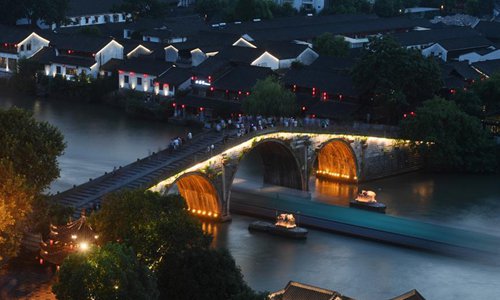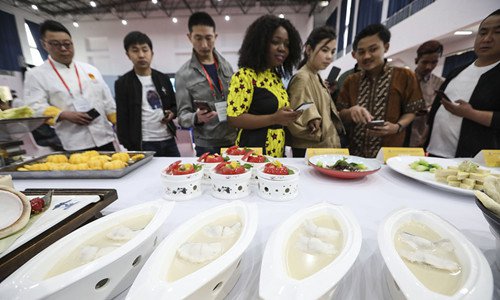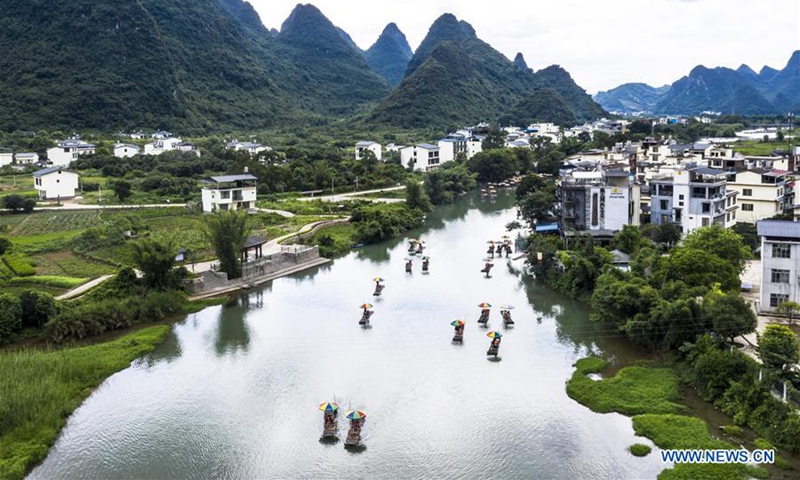Huaian in East China’s Jiangsu Province, the hometown of former Chinese premier Zhou Enlai, has been selected as one of the new cities to be added to the United Nations Educational, Scientific and Cultural Organization (UNESCO) Creative Cities Network, thanks to its abundant history of gastronomy.
UNESCO published its list on Monday, with 49 cities added, including Huaian. The city is now the fifth in China on the list, after Chengdu, Shunde, Macao, and Huaian’s neighbor Yangzhou.
Sitting on the North-South divide of the country, the geographical location has not only given the city a combination of both Northern and Southern Chinese cuisine, but also dragged it into a gastronomic battle with Yangzhou.
Origin of Huaian cuisine

A cargo ship sails across the Gongchen Bridge over the Grand Canal in Hangzhou, east China’s Zhejiang Province, July 20, 2017. A cultural and scenic belt, including museums, cultural and creative zones, historical relics and ancient streets, has formed along the 12-kilometer-long section of the Beijing-Hangzhou Grand Canal in Gongshu District of Hangzhou. (Xinhua/Huang Zongzhi)
The city lies alongside the Beijing-Hangzhou Grand Canal, making it an important water transportation port. It is also one of the main birthplaces of Huai-Yang cuisine – a general term for dishes from Huaian and Yangzhou.
Huaian food has been molded partly by the 2,500-year history of the Beijing-Hangzhou Grand Canal. As early as the Spring and Autumn Period (770BC-476BC), the canal was built around Huaian, and local food and snacks from the city were brought to other areas.
In the Qing Dynasty (1644-1911AD), with the dredging of the canal and its more developed water transportation, Huaian cuisine spread to more northern parts of China including Beijing.
In the Qing Dynasty, Huaian flourished as a center for many industries such as shipbuilding and canal management. The city’s cuisine also started to absorb specialties from across the country.
Now Huaian has more than 1,300 kinds of dishes. The uniqueness of the city has also created rich dishes with lobsters and hairy crabs.
Battle for recognition

A Huaiyang cuisine contest kicked off in Huaian, East China’s Jiangsu Province on May 8, 2019. More than 300 cooks from across China attended the event. Photo: VCG
Fish is the main part of Huai-Yang cuisine, which has a light, mild and sweet flavor while preserving the original taste of the ingredients. Local dishes regularly feature in national banquets.
Based on a book recording the history of Beijing Hotel where the first national banquet was held after the founding of the People’s Republic of China in 1949, the “grand national banquet was completely based on Huai-Yang cuisine.”
“The hotel hired nine chefs, including Zhu Dianrong, Wang Dukun, and Sun Jiufu from the Yuhuatai restaurant in Beijing. Yuhuatai is a high-end restaurant specializing in authentic Huai-Yang style dishes,” according to the book.
The honor led to an invisible tug of war between the residents of Huaian and Yangzhou. Yangzhou has also claimed the title of “hometown of Huai-Yang cuisine,” and in 2019 it was among 66 newly added cities in the UNESCO list, a step earlier than Huaian.
Global Times



